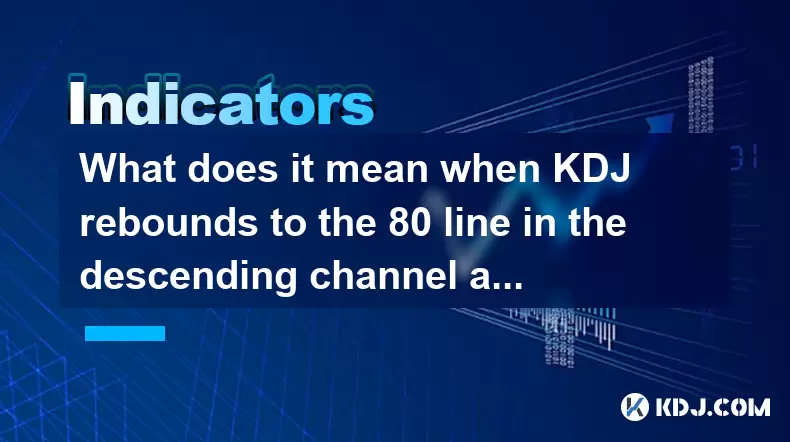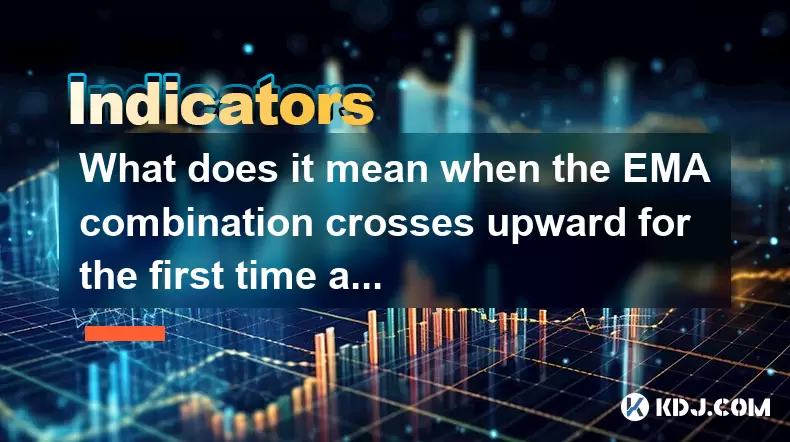-
 Bitcoin
Bitcoin $119800
1.38% -
 Ethereum
Ethereum $3873
3.25% -
 XRP
XRP $3.247
1.85% -
 Tether USDt
Tether USDt $1.001
0.02% -
 BNB
BNB $840.4
5.94% -
 Solana
Solana $190.0
2.55% -
 USDC
USDC $1.000
0.03% -
 Dogecoin
Dogecoin $0.2433
2.69% -
 TRON
TRON $0.3197
-0.05% -
 Cardano
Cardano $0.8367
1.39% -
 Sui
Sui $4.327
3.11% -
 Hyperliquid
Hyperliquid $44.00
0.31% -
 Stellar
Stellar $0.4461
1.76% -
 Chainlink
Chainlink $19.25
4.61% -
 Hedera
Hedera $0.2941
3.90% -
 Bitcoin Cash
Bitcoin Cash $598.4
6.89% -
 Avalanche
Avalanche $26.19
4.67% -
 Litecoin
Litecoin $115.1
0.50% -
 Shiba Inu
Shiba Inu $0.00001427
1.55% -
 Toncoin
Toncoin $3.379
2.01% -
 UNUS SED LEO
UNUS SED LEO $8.966
-0.16% -
 Ethena USDe
Ethena USDe $1.001
0.02% -
 Uniswap
Uniswap $11.04
4.16% -
 Polkadot
Polkadot $4.239
2.00% -
 Monero
Monero $324.6
0.36% -
 Bitget Token
Bitget Token $4.672
2.46% -
 Pepe
Pepe $0.00001294
2.69% -
 Dai
Dai $0.0000
0.01% -
 Cronos
Cronos $0.1443
2.71% -
 Aave
Aave $302.9
1.98%
What does it mean when KDJ rebounds to the 80 line in the descending channel and is blocked?
A KDJ rebound to 80 within a descending channel often signals temporary bullish momentum, but if blocked, it confirms seller dominance and potential continuation of the downtrend.
Jul 28, 2025 at 10:01 am

Understanding the KDJ Indicator in Cryptocurrency Trading
The KDJ indicator is a momentum oscillator widely used in cryptocurrency technical analysis. It combines the %K, %D, and %J lines to assess overbought and oversold conditions in price movements. The %K line represents the current closing price relative to the recent price range, the %D line is a smoothed version of %K, and the %J line is a derivative that reflects the divergence between %K and %D. Traders use the KDJ to identify potential reversal points, especially in volatile markets like cryptocurrencies. When the KDJ rebounds to the 80 line, it suggests that upward momentum is building. However, the interpretation changes significantly when this rebound occurs within a descending channel and is subsequently blocked.
What Does a Descending Channel Indicate?
A descending channel is formed by drawing two parallel trendlines: one connecting the lower highs and another connecting the lower lows. This structure reflects a consistent downtrend where each rally fails to surpass the previous high. In the context of cryptocurrency, such channels often emerge during bear markets or correction phases. The presence of a descending channel implies that selling pressure dominates, and any upward price movement is likely to be met with resistance. When the KDJ indicator rebounds within this channel, it may initially suggest a short-term bullish correction. However, the broader trend remains bearish, and traders must assess whether the rebound has enough strength to break the channel’s upper boundary.
Interpreting the KDJ Rebound to the 80 Line
When the KDJ %K line rises and touches or exceeds the 80 level, it traditionally signals overbought conditions. In a neutral or uptrend market, this could precede a pullback. However, in a descending channel, reaching 80 during a rebound indicates that buyers are attempting to push prices higher, but the environment is inherently resistant to sustained bullish momentum. The key insight lies in the context of the trend. A rebound to 80 within a descending channel often reflects a temporary exhaustion of selling pressure rather than a genuine reversal. The fact that the KDJ reaches 80 shows that buying interest exists, but its effectiveness is limited by the overarching downtrend.
What Happens When the KDJ Is Blocked at the 80 Line?
The term "blocked" means that after the KDJ reaches or approaches the 80 line, it fails to sustain momentum and begins to turn downward. This behavior suggests that bullish momentum is rejected at a critical resistance level. In practical terms, this can be observed when:
- The %K line peaks near 80 but fails to cross above it decisively.
- The %D line does not follow suit with a bullish crossover.
- The %J line reverses sharply, indicating loss of momentum.
- Price action simultaneously meets resistance at the upper boundary of the descending channel.
This confluence of signals strengthens the bearish case. The blockage at 80 implies that despite short-term buying, sellers regain control, reinforcing the dominance of the downtrend. Traders often interpret this as a confirmation of resistance and may use it as a signal to initiate short positions or exit longs.
How to Trade This KDJ Pattern in a Descending Channel
Trading this scenario requires careful observation and risk management. Here’s a step-by-step approach:
- Confirm the descending channel by identifying at least two lower highs and two lower lows connected by parallel trendlines.
- Monitor the KDJ indicator on the same chart, ensuring it is set to standard parameters (usually 9, 3, 3).
- Wait for the %K line to rise toward 80 during a price rally within the channel.
- Observe price action at the upper channel boundary—look for rejection candles like shooting stars or bearish engulfing patterns.
- Check for divergence between price and KDJ; if price makes a higher high but KDJ makes a lower high, it signals weakening momentum.
- Enter a short position when the %K line starts to turn down from near 80, confirmed by a bearish candle closing below the intrachannel resistance.
- Place a stop-loss slightly above the recent swing high or the upper channel line.
- Set a take-profit near the lower boundary of the channel or at previous support levels.
Using volume analysis can enhance this strategy. A rebound with low volume suggests weak buying interest, increasing the likelihood of failure at 80. Conversely, high volume on the rejection strengthens the bearish signal.
Common Misinterpretations and Pitfalls
Traders often misread a KDJ rebound to 80 as a buy signal, especially if they focus solely on the indicator without considering the broader trend. In a descending channel, this can lead to premature long entries that result in losses. Another pitfall is ignoring timeframe alignment. A 4-hour chart showing a KDJ rebound to 80 might appear bullish, but if the daily chart is in a strong downtrend, the signal is likely to fail. Additionally, over-reliance on KDJ without confirmation from price action or other indicators like RSI or MACD can produce false signals. It’s essential to treat the KDJ as a complementary tool, not a standalone decision-maker.
Frequently Asked Questions
What timeframes are best for observing KDJ rebounds in a descending channel?
The 1-hour, 4-hour, and daily charts are most effective. Shorter timeframes like 15-minute may produce too many false signals due to noise, while longer timeframes provide stronger confirmation. The 4-hour chart offers a balanced view of momentum and trend structure.
Can the KDJ rebound to 80 still lead to a breakout from the descending channel?
Yes, but it requires strong confirmation. If the %K line sustains above 80, the %D line crosses upward, and price closes decisively above the upper channel line with high volume, a breakout may occur. However, such events are rare within established descending channels and often require fundamental catalysts.
How do you distinguish between a temporary rebound and a trend reversal using KDJ?
Look for sustained KDJ behavior above 80 combined with price closing outside the channel. A reversal typically involves multiple timeframes confirming the shift, along with bullish candlestick patterns and increasing volume. A temporary rebound shows KDJ peaking at 80 and reversing quickly, with price respecting the channel boundary.
Is the KDJ more reliable in certain cryptocurrencies?
KDJ tends to perform better in highly liquid and volatile assets like Bitcoin (BTC) and Ethereum (ETH) due to their consistent trading volume and clear price trends. In low-cap altcoins with erratic price movements, KDJ signals may be less reliable due to whipsaws and manipulation.
Disclaimer:info@kdj.com
The information provided is not trading advice. kdj.com does not assume any responsibility for any investments made based on the information provided in this article. Cryptocurrencies are highly volatile and it is highly recommended that you invest with caution after thorough research!
If you believe that the content used on this website infringes your copyright, please contact us immediately (info@kdj.com) and we will delete it promptly.
- US President, EU Trade, Crypto Spike: What's the Deal?
- 2025-07-28 18:30:12
- Adrian Newman's Endorsement: Ethereum Still King for NFT Collections?
- 2025-07-28 18:30:12
- Crypto's Next Big Meme: Is MAGACOIN Finance the New DOGE or SHIB?
- 2025-07-28 17:15:12
- Altcoins, Cryptos, and 250x Potential: Catching the Next Wave
- 2025-07-28 17:15:12
- BlackRock Veteran Joins SharpLink as Ethereum Treasury Swells: A New Era?
- 2025-07-28 17:50:12
- Bitcoin Laundering, Blockchain Forensics, and Crypto Fraud: A Deep Dive into the Dark Side of Digital Assets
- 2025-07-28 17:50:12
Related knowledge

What does it mean when the EMA combination crosses upward for the first time after sideways trading?
Jul 28,2025 at 03:43pm
Understanding the EMA and Its Role in Technical AnalysisThe Exponential Moving Average (EMA) is a widely used technical indicator in cryptocurrency tr...

What signal does the ROC send when it rises rapidly from a low level and breaks through the zero axis?
Jul 27,2025 at 10:15am
Understanding the Rate of Change (ROC) IndicatorThe Rate of Change (ROC) is a momentum-based oscillator used in technical analysis to measure the perc...

What does it mean when the price breaks through the double bottom neckline and the moving averages are arranged in a bullish pattern?
Jul 28,2025 at 10:57am
Understanding the Double Bottom PatternThe double bottom is a widely recognized reversal chart pattern in technical analysis, particularly within the ...

What signal does the DMA fast line cross the slow line above the zero axis?
Jul 28,2025 at 05:42am
Understanding the DMA Indicator and Its ComponentsThe DMA (Difference of Moving Averages) indicator is a technical analysis tool used in cryptocurrenc...

What does it mean that the rebound is blocked after the moving average is arranged in a short position for the first time?
Jul 26,2025 at 10:51am
Understanding the Short-Term Moving Average ConfigurationWhen traders refer to a 'short position arrangement' in moving averages, they are describing ...

What does it mean that the ZIGZAG low point is raised and the high point breaks through the previous peak?
Jul 28,2025 at 03:28am
Understanding the ZIGZAG Indicator in Cryptocurrency TradingThe ZIGZAG indicator is a technical analysis tool widely used in cryptocurrency trading to...

What does it mean when the EMA combination crosses upward for the first time after sideways trading?
Jul 28,2025 at 03:43pm
Understanding the EMA and Its Role in Technical AnalysisThe Exponential Moving Average (EMA) is a widely used technical indicator in cryptocurrency tr...

What signal does the ROC send when it rises rapidly from a low level and breaks through the zero axis?
Jul 27,2025 at 10:15am
Understanding the Rate of Change (ROC) IndicatorThe Rate of Change (ROC) is a momentum-based oscillator used in technical analysis to measure the perc...

What does it mean when the price breaks through the double bottom neckline and the moving averages are arranged in a bullish pattern?
Jul 28,2025 at 10:57am
Understanding the Double Bottom PatternThe double bottom is a widely recognized reversal chart pattern in technical analysis, particularly within the ...

What signal does the DMA fast line cross the slow line above the zero axis?
Jul 28,2025 at 05:42am
Understanding the DMA Indicator and Its ComponentsThe DMA (Difference of Moving Averages) indicator is a technical analysis tool used in cryptocurrenc...

What does it mean that the rebound is blocked after the moving average is arranged in a short position for the first time?
Jul 26,2025 at 10:51am
Understanding the Short-Term Moving Average ConfigurationWhen traders refer to a 'short position arrangement' in moving averages, they are describing ...

What does it mean that the ZIGZAG low point is raised and the high point breaks through the previous peak?
Jul 28,2025 at 03:28am
Understanding the ZIGZAG Indicator in Cryptocurrency TradingThe ZIGZAG indicator is a technical analysis tool widely used in cryptocurrency trading to...
See all articles

























































































